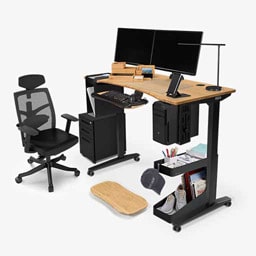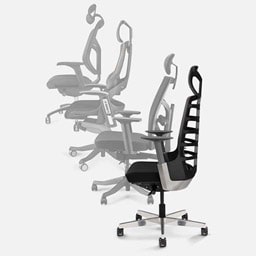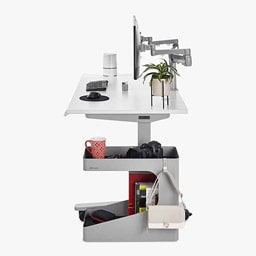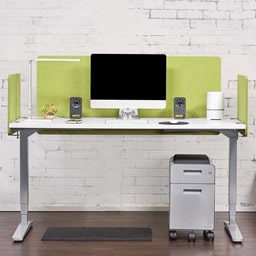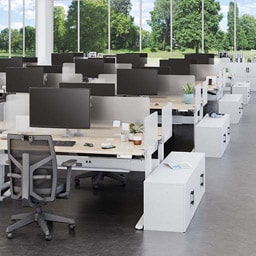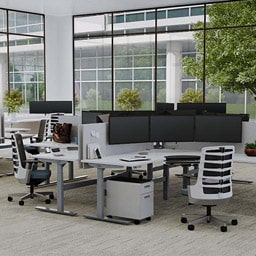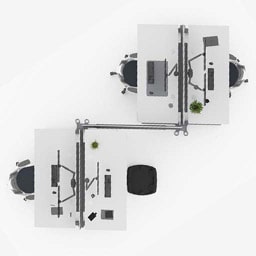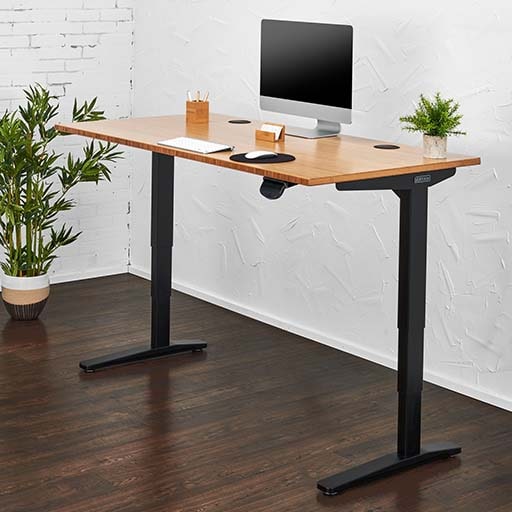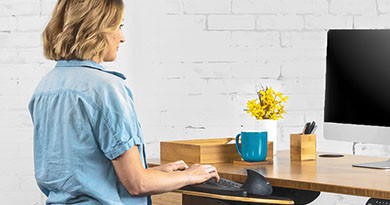Six benefits of moving more during your work day | UPLIFT Desk
Posted by UPLIFT Desk on Mar 22nd 2023

Six benefits of moving more during your work day
Something as simple as moving more throughout the day can have a host of physical and mental health benefits.
Do you sit at a desk all day? If so, you're not alone. Many office workers spend the majority of the day sitting down, which can be bad for your health. Luckily, combatting the detrimental impact of sitting all day is achievable, and one easy strategy is incorporating more movement into your daily routine.
The health impacts of sitting all day at work
Studies have shown that sitting for long periods of time is linked to a number of health problems, including obesity, type 2 diabetes, and heart disease. When seated, your body is in a static position. This means that your muscles are not contracting and expanding like they do when you stand or walk. This can lead to a decrease in the amount of blood flowing to your legs and feet, which can cause swelling, varicose veins, and other ailments.
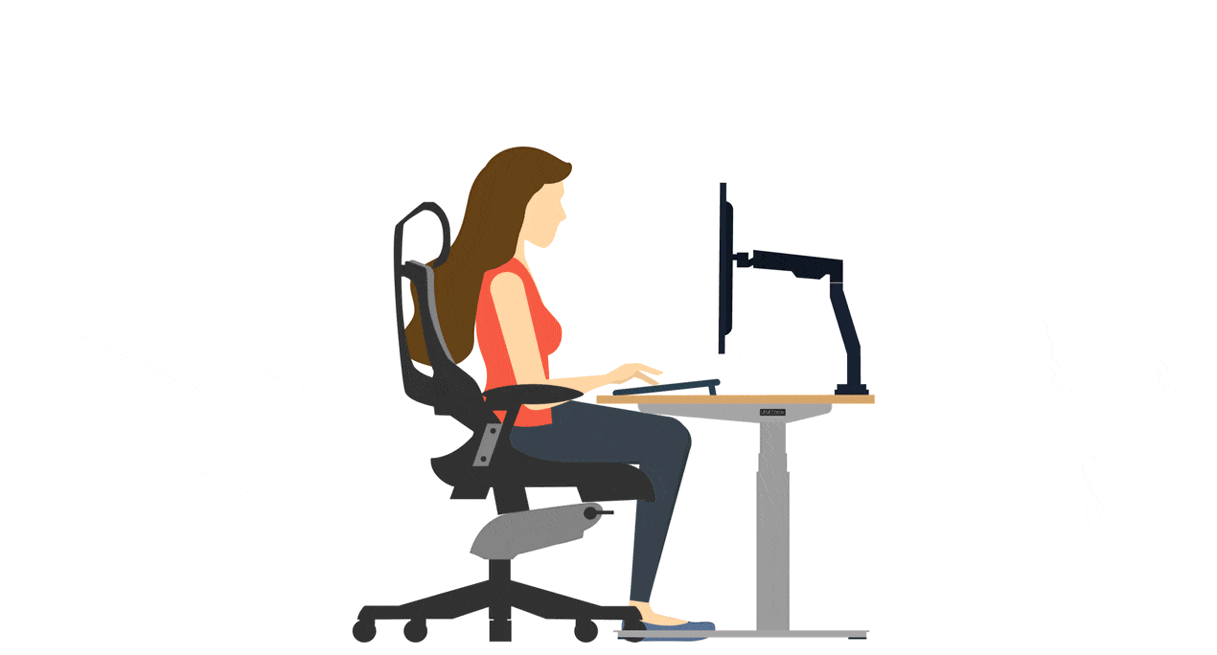
The benefits of movement
From boosting energy levels and improving concentration, to strengthening muscles and reducing stress, moving more during the day can have a huge impact on both your physical and mental wellbeing. Read on for six surprising benefits of moving.
1. Moving more at work can improve your mood and help you to feel more alert.
Research conducted by the American Psychological Association in 2020 showed that people who moved more at work experienced an average of 20% higher levels of alertness and productivity than those who remained inactive during their working hours. Not only did these individuals report increased energy throughout the day, but they also felt more positive about their job tasks and workplace environment.
Another study, published in Frontiers in Human Neuroscience and conducted by the American Psychological Association, sought to measure the effects of moving more during work hours on alertness, productivity, energy levels, feelings towards tasks and workplace environment, and overall mood. The research focused on office workers who spent most of the day sitting at a desk and found that when people moved around every 30 minutes while working they reported feeling happier than those who sat continuously throughout the day. The researchers also noted that frequent movement was linked to higher levels of focus and productivity among participants.
Yet another study conducted by Harvard University showed that standing up for as little as two minutes every hour helped improve cognitive function by increasing blood flow to the brain. This suggests that taking regular breaks from sitting down could be beneficial for keeping you mentally sharp throughout the day.
2. Movement can increase productivity levels.
Studies have found that standing desks can help improve focus and productivity in the workplace. A Harvard University study found that when participants used standing desks throughout their workday they reported feeling more alert than those who sat continuously during the same period. Additionally, this research also showed that these individuals experienced lower levels of fatigue compared to those who remained seated for extended periods throughout the day.
A study published in Frontiers in Human Neuroscience sought to measure how standing desks impacted creativity among office workers and found that participants with access to standing desks were able to generate new ideas significantly faster than those without them—suggesting that using a standing desk can help boost creativity as well as productivity in the workplace!
3. Walking around or stretching every few hours helps reduce stress levels.
Walking or stretching every few hours can be a great way to reduce stress levels in the workplace. A 2020 study conducted by Stanford University found that people who moved more frequently throughout their workday experienced 25% lower levels of stress than those who remained inactive during the same period. This suggests that taking regular walking breaks from sitting down or standing, even if only for a few minutes, can help to release tension from your body and lower stress levels. Another great option for walking at work is a treadmill desk.
Moreover, this study showed that those who moved more often also reported feeling calmer and less anxious throughout the day compared to their sedentary counterparts. This suggests that moving more at work can be an effective way of managing feelings of stress or anxiety.
4. Moving more improves circulation, important for delivering oxygen and nutrients to your cells.
Movement increases circulation by activating the muscles and stimulating blood flow. This increased blood flow helps to deliver oxygen and nutrients to cells more efficiently, allowing you to stay energized and alert throughout the day.
Circulation is also important for providing the body with energy, as it helps to deliver glucose from food and oxygen to cells that need it. Studies have shown that people who move more often during the workday experience higher levels of energy compared to those who remain seated for extended periods. This suggests that moving regularly can be beneficial for keeping your energy levels up throughout the day.
5. Movement can help reduce your risk of heart disease, type 2 diabetes, and various types of cancer.
Regular physical activity has been linked with a reduced risk of several chronic diseases, including heart disease, type 2 diabetes, and certain types of cancer. According to a 2020 study published in the American Journal of Public Health, regular physical activity can reduce the risk for these conditions by up to 20%. Additionally, research from the Centers for Disease Control and Prevention (CDC) found that people who move for at least 30 minutes every day were 15% less likely to develop high blood pressure than their sedentary counterparts.
The amount of physical activity needed to reduce the risk of chronic diseases varies from person to person, but it is generally recommended that adults get at least 150 minutes of moderate-intensity physical activity every week. Adding more movement into your day, such as taking walking breaks or using a standing desk, can help you reach this goal quickly and on a regular basis, helping reduce your risk of developing chronic diseases.
6. Movement has been shown to improve cognitive function and protect against age-related decline.
One way in which movement improves cognitive function is by increasing blood flow to the brain. A 2020 study published in The American Journal of Physiology found that aerobic exercise increased blood flow to the hippocampus, an area of the brain associated with learning and memory formation. This suggests that engaging in regular physical activity may help to enhance cognitive performance over time. Additionally, this study showed that those who exercised regularly had better scores on tests related to verbal fluency compared to those who remained sedentary during the same period.
Movement protects against age-related decline by reducing inflammation levels within the body. Inflammation can damage neurons within the brain, leading to impaired cognition over time. However, according to a 2019 study published in Ageing Research Reviews, regular physical activity has been shown to reduce systemic inflammation levels significantly, leading to improved cognitive performance and protection against age-related decline.
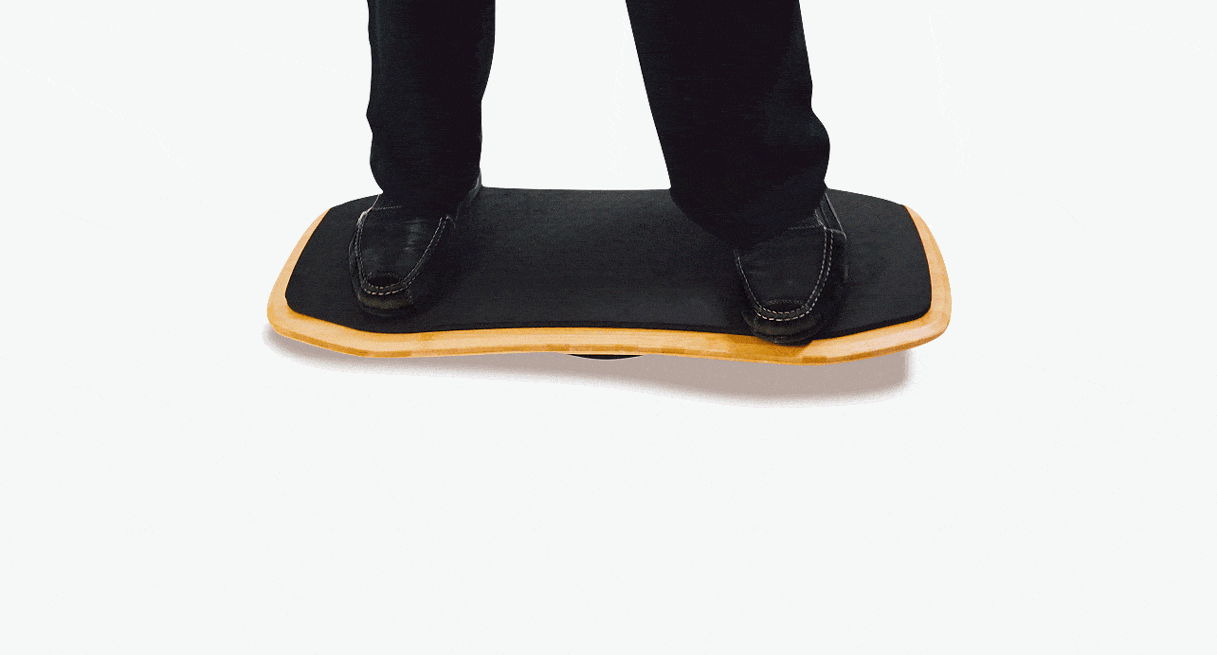
How and when to incorporate movement
If you have a desk job, there are some things you can do to reduce the risks associated with sitting all day. First, try to get up and move around every 30 minutes or so. Even just a short walk down the hall will get your muscles moving and increase blood flow. Or try a treadmill desk.
Secondly, make sure that your workstation is set up properly. A supportive, ergonomic chair should be set to a height that allows your feet to rest flat on the floor, and the lumbar back area should be supported. If possible, invest in a standing desk or a less expensive height adjustable desk converter (note that converters don't fix seated desktop heights—a full standing desk is preferred), so you can alternate between sitting and standing throughout the day. Additionally, adding a motion board to your standing desk setup can further increase your ability to incorporate movement into the workday.
Regular exercise is important for maintaining good health, but sometimes it can be difficult to find the time or motivation to get moving. However, even small changes that everyone can make to increase daily activity levels are beneficial. For example, instead of sitting at a desk all day, try using a standing desk or taking regular walk breaks. These simple changes can have a big impact on your overall health and well-being—both mental and physical.

